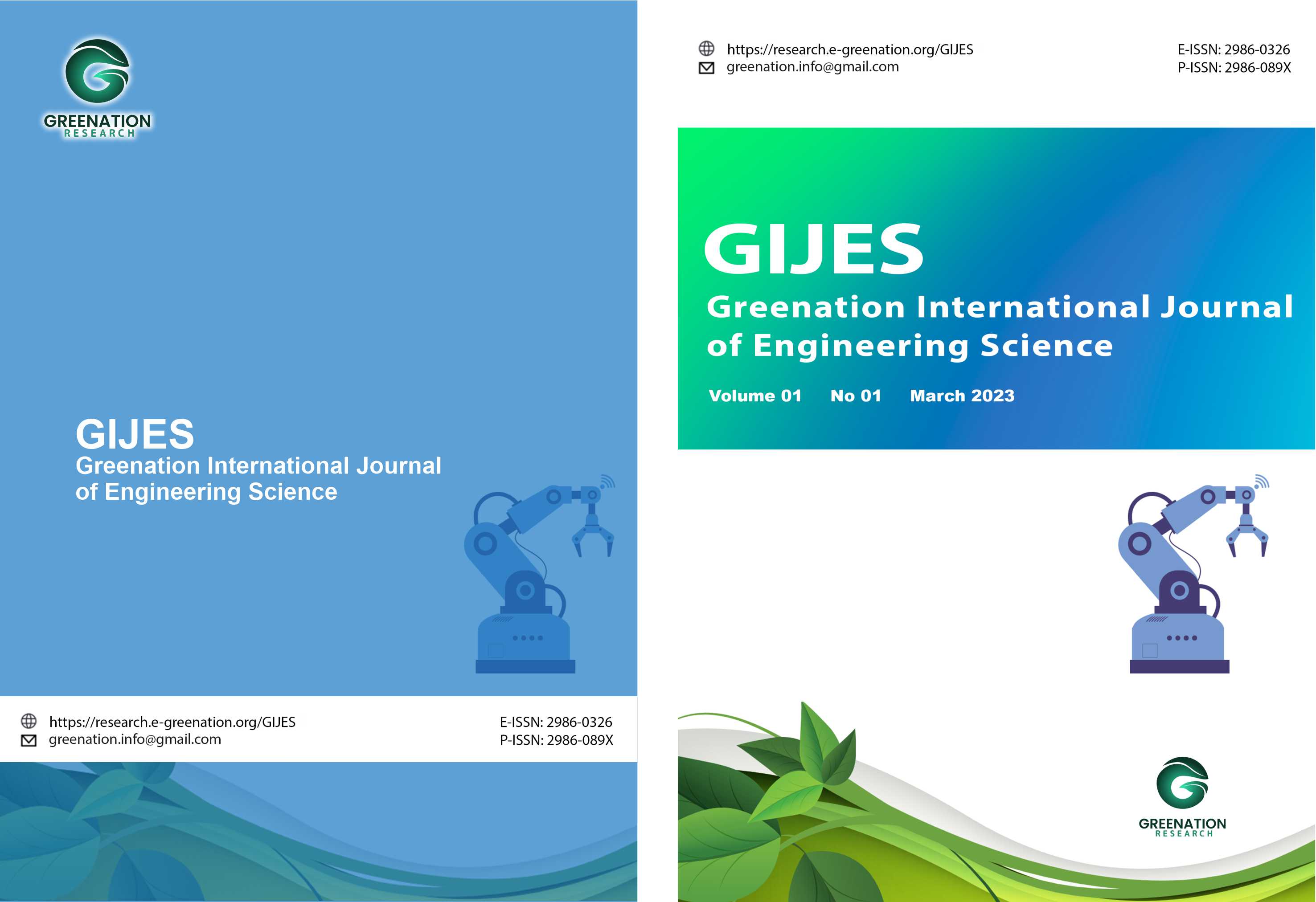Impact of Artificial Intelligence and Digital Technologies on Consumer Behavior and Brand Perception: A Study of Young Consumers in Ahmedabad
DOI:
https://doi.org/10.38035/gijes.v1i4.339Keywords:
Artificial Intelligence, Consumer Behavior, Personalized MarketingAbstract
This study investigates the impact of artificial intelligence (AI) and digital technologies on consumer behavior and brand perceptions among young consumers in Ahmedabad. Using a quantitative approach, data was collected from 116 respondents through a structured questionnaire to examine AI-driven personalized experiences such as product recommendations, virtual assistants, and their influence on consumer attitudes and purchase intentions. Statistical analysis revealed that AI integration significantly enhances consumer satisfaction and influences purchase decisions, while demographic factors such as gender and education showed minimal influence on AI preferences. The findings highlight the potential of AI to shape future consumer engagement and purchasing behavior. This research contributes to the understanding of AI's role in modern retail and its implications for businesses aiming to leverage AI for personalized marketing.
References
Abbasi, A. Z., Ayaz, N., Kanwal, S., Albashrawi, M., & Khair, N. (2023). TikTok app usage behavior: the role of hedonic consumption experiences. Data Technologies and Applications, 57(3), 344–365. https://doi.org/10.1108/DTA-03-2022-0107
Ahuja, Y., Jain, P., & Gupta, P. (2023). Uni Style Image – a savvy fashion brand poised to stay buoyant. Emerald Emerging Markets Case Studies, 13(4), 1–26. https://doi.org/10.1108/EEMCS-12-2022-0537
Bhat, I. H., Gupta, S., & Bhat, G. M. (2024). Effect of social media usage on major depressive disorder among generation Z: a study in Indian context. Information Discovery and Delivery, 52(3), 261–272. https://doi.org/10.1108/IDD-07-2022-0071
Bhatnagr, P., Rajesh, A., & Misra, R. (2024). Neobank adoption: integrating the information systems effectiveness framework with the innovation resistance model. Management Decision, ahead-of-print(ahead-of-print). https://doi.org/10.1108/MD-06-2023-0977
Borrelli, L. M. (2020). Between suspicion, nicknames, and trust—renegotiating ethnographic access with Swedish border police. Journal of Organizational Ethnography, 9(2), 143–157. https://doi.org/10.1108/JOE-01-2019-0010
Bubphapant, J., & Brandão, A. (2024). Exploring ageing consumers’ usage of content marketing, content typology and online brand advocacy. EuroMed Journal of Business, ahead-of-print(ahead-of-print). https://doi.org/10.1108/EMJB-10-2023-0283
Butt, A. H., Ahmad, H., & Muzaffar, A. (2024). Augmented reality is the new digital banking – AR brand experience impact on brand loyalty. International Journal of Bank Marketing, 42(2), 156–182. https://doi.org/10.1108/IJBM-11-2022-0522
Butt, A. H., Ahmad, H., Muzaffar, A., Irshad, W., Mumtaz, M. U., & Zubair Ahmad Khan, T. (2024). WeChat gamification: mobile payment impact on word of mouth and customer loyalty. Spanish Journal of Marketing - ESIC, ahead-of-print(ahead-of-print). https://doi.org/10.1108/SJME-01-2023-0021
Capobianco, J. P. (2023). The Keys to Successful Ventures in the Future. In The New Era of Global Services: A Framework for Successful Enterprises in Business Services and IT (pp. 33–148). Emerald Publishing Limited. https://doi.org/10.1108/978-1-83753-626-920231003
Chan, H. M., Ku, K. C., Li, P. K. T., Ng, H. K., & Ng, S. Y. M. (2016). Piece by piece: understanding graffiti-writing in Hong Kong. Social Transformations in Chinese Societies, 12(1), 44–62. https://doi.org/10.1108/STICS-05-2016-006
Chatterjee, S., Chaudhuri, R., Vrontis, D., & Thrassou, A. (2022). Dark side of smartphone applications and its consequence to the Asian society. Journal of Asia Business Studies, 16(6), 1006–1029. https://doi.org/10.1108/JABS-06-2021-0232
Chuah, S. H.-W., Jitanugoon, S., Puntha, P., & Aw, E. C.-X. (2022). You don’t have to tip the human waiters anymore, but … Unveiling factors that influence consumers’ willingness to pay a price premium for robotic restaurants. International Journal of Contemporary Hospitality Management, 34(10), 3553–3587. https://doi.org/10.1108/IJCHM-08-2021-1023
Contreras Pinochet, L. H., Diogo, G. T., Lopes, E. L., Herrero, E., & Bueno, R. L. P. (2019). Propensity of contracting loans services from FinTech’s in Brazil. International Journal of Bank Marketing, 37(5), 1190–1214. https://doi.org/10.1108/IJBM-07-2018-0174
Das, P., & Mandal, S. (2016). Evaluating the influence of social media on brand sacralization. South Asian Journal of Global Business Research, 5(3), 424–446. https://doi.org/10.1108/SAJGBR-12-2015-0085
Elsotouhy, M. M., Mobarak, A. M. A., Dakrory, M. I., Ghonim, M. A., & Khashan, M. A. (2023). Integrating ISS and SOR models to investigate the determinants of continuance intention toward using m-payment for donations (Sadaqah): the moderating role of Islamic religiosity. International Journal of Bank Marketing, 41(7), 1640–1670. https://doi.org/10.1108/IJBM-11-2022-0498
Garg, A., Sachdeva, M., Singh, S., & Goel, P. (2022). Modeling collaborative consumption by extending self-determination theory: an emerging economy perspective. Social Responsibility Journal, 18(4), 839–857. https://doi.org/10.1108/SRJ-12-2020-0512
Gentina, E. (2019). Generation Z in France: Reverse Socialisation and Social Engagement. In C. Scholz & A. Rennig (Eds.), Generations Z in Europe (pp. 109–126). Emerald Publishing Limited. https://doi.org/10.1108/978-1-78973-491-120191014
Halal, W. (2013). Through the megacrisis: the passage to global maturity. Foresight, 15(5), 392–404. https://doi.org/10.1108/FS-05-2012-0034
Halal, W. E. (2002). The technology gap: a report from the corporate suites. On the Horizon, 10(2). https://doi.org/10.1108/oth.2002.27410bab.001
Horppu, M., Kuivalainen, O., Tarkiainen, A., & Ellonen, H. (2008). Online satisfaction, trust and loyalty, and the impact of the offline parent brand. Journal of Product & Brand Management, 17(6), 403–413. https://doi.org/10.1108/10610420810904149
Ikrama, S., & Qumer, S. M. (2024). Kavak: a Latin American startup aiming to disrupt the used-car market across emerging economies. Emerald Emerging Markets Case Studies, 14(2), 1–38. https://doi.org/10.1108/EEMCS-04-2024-0181
Karmali, Z. A., Galliara, M., & Srivastava, M. (2018). The Bake Collective – making a delicious difference. Emerald Emerging Markets Case Studies, 8(1), 1–28. https://doi.org/10.1108/EEMCS-01-2017-0010
Khan, N. F., Ikram, N., Murtaza, H., & Asadi, M. A. (2023). Social media users and cybersecurity awareness: predicting self-disclosure using a hybrid artificial intelligence approach. Kybernetes, 52(1), 401–421. https://doi.org/10.1108/K-05-2021-0377
Khare, A., Kautish, P., & Khare, A. (2023). The online flow and its influence on awe experience: an AI-enabled e-tail service exploration. International Journal of Retail & Distribution Management, 51(6), 713–735. https://doi.org/10.1108/IJRDM-07-2022-0265
Khobzi, H., & Teimourpour, B. (2014). How significant are users’ opinions in social media? International Journal of Accounting & Information Management, 22(4), 254–272. https://doi.org/10.1108/IJAIM-02-2014-0010
Kudeshia, C., & Kumar, A. (2017). Social eWOM: does it affect the brand attitude and purchase intention of brands? Management Research Review, 40(3), 310–330. https://doi.org/10.1108/MRR-07-2015-0161
Kureshi, S., & Thomas, S. (2019). Online grocery retailing – exploring local grocers beliefs. International Journal of Retail & Distribution Management, 47(2), 157–185. https://doi.org/10.1108/IJRDM-05-2018-0087
Lee, R. W. B., Yip, J. Y. T., & Shek, V. W. Y. (2021). Assessment of Knowledge Risks. In Knowledge Risk and its Mitigation: Practices and Cases (pp. 15–40). Emerald Publishing Limited. https://doi.org/10.1108/978-1-78973-919-020211002
Mäenpää, K. (2006). Clustering the consumers on the basis of their perceptions of the Internet banking services. Internet Research, 16(3), 304–322. https://doi.org/10.1108/10662240610673718
Meghrajani, I., & Shah, S. (2022). Product extension or channel extension – a case of Cronos Industries Pvt Ltd. Emerald Emerging Markets Case Studies, 12(4), 1–28. https://doi.org/10.1108/EEMCS-10-2021-0350
Mer, A., & Virdi, A. S. (2023). Navigating the Paradigm Shift in HRM Practices Through the Lens of Artificial Intelligence: A Post-pandemic Perspective. In P. Tyagi, N. Chilamkurti, S. Grima, K. Sood, & B. Balusamy (Eds.), The Adoption and Effect of Artificial Intelligence on Human Resources Management, Part A (pp. 123–154). Emerald Publishing Limited. https://doi.org/10.1108/978-1-80382-027-920231007
Ozturkcan, S., & Okan, E. Y. (Eds.). (2018). Index. In Marketing Management in Turkey (pp. 455–464). Emerald Publishing Limited. https://doi.org/10.1108/978-1-78714-557-320181029
Pasca, M. G., Renzi, M. F., di Pietro, L., & Guglielmetti Mugion, R. (2021). Gamification in tourism and hospitality research in the era of digital platforms: a systematic literature review. Journal of Service Theory and Practice, 31(5), 691–737. https://doi.org/10.1108/JSTP-05-2020-0094
Patel, K. J., & Patel, H. J. (2018). Adoption of internet banking services in Gujarat. International Journal of Bank Marketing, 36(1), 147–169. https://doi.org/10.1108/IJBM-08-2016-0104
Saha, R., Ahlawat, S., Akram, U., Jangbahadur, U., Dhaigude, A. S., Sharma, P., & Kumar, S. (2024). Online abuse: a systematic literature review and future research agenda. International Journal of Conflict Management, ahead-of-print(ahead-of-print). https://doi.org/10.1108/IJCMA-09-2023-0188
Samala, N., & Katkam, B. S. (2020). Fashion brands are engaging the millennials: a moderated-mediation model of customer-brand engagement, participation, and involvement. Young Consumers, 21(2), 233–253. https://doi.org/10.1108/YC-12-2018-0902
Scholz, C., & Rennig, A. (Eds.). (2019). Index. In Generations Z in Europe (pp. 285–299). Emerald Publishing Limited. https://doi.org/10.1108/978-1-78973-491-120191022
Srivastava, A., Dasgupta, S. A., Ray, A., Bala, P. K., & Chakraborty, S. (2021). Relationships between the “Big Five” personality types and consumer attitudes in Indian students toward augmented reality advertising. Aslib Journal of Information Management, 73(6), 967–991. https://doi.org/10.1108/AJIM-02-2021-0046
Ting, S.-H., Leong, C.-M., Lim, T.-Y., Kuek, T. Y., & Lim, B. C. Y. (2024). Advancing corporate sustainability: empowering the young consumers to reduce food waste for the sake of our planet. Asia-Pacific Journal of Business Administration, ahead-of-print(ahead-of-print). https://doi.org/10.1108/APJBA-01-2024-0018
Wut, E., Ng, P., Leung, K. S. W., & Lee, D. (2021). Do gamified elements affect young people’s use behaviour on consumption-related mobile applications? Young Consumers, 22(3), 368–386. https://doi.org/10.1108/YC-10-2020-1218
Yadav, U. S., Sood, K., Tripathi, R., Grima, S., & Tripathi, M. A. (2023). An Analysis of the Impact on India’s Sustainable Development Resulting from Women in Small Enterprises’ Fin-Tech and Financial Awareness During COVID-19 Using The (UTAUT) Model. In S. Grima, E. Thalassinos, G. G. Noja, T. v Stamataopoulos, T. Vasiljeva, & T. Volkova (Eds.), Digital Transformation, Strategic Resilience, Cyber Security and Risk Management (Vol. 111B, pp. 71–85). Emerald Publishing Limited. https://doi.org/10.1108/S1569-37592023000111B005
Yeap Ai Leen, J., Thurasamy, R., & Omar, A. (2012). Engaging Millennials in an evolving web environment: some key points for e?retailers. Business Strategy Series, 13(3), 111–117. https://doi.org/10.1108/17515631211225242
Y?ld?r?m, A. C., & Erdil, E. (2024). The effect of Covid-19 on digital banking explored under business model approach. Qualitative Research in Financial Markets, 16(1), 87–107. https://doi.org/10.1108/QRFM-08-2021-0142
Yim, A., Price, B., Agnihotri, R., & Cui, A. P. (2023). Do salespeople’s online profile pictures predict the number of online reviews? Effect of a babyface. European Journal of Marketing, 57(7), 1886–1911. https://doi.org/10.1108/EJM-03-2022-0173
Downloads
Published
How to Cite
Issue
Section
License
Copyright (c) 2025 Akshita Samsukha, Pratham Trivedi, Vansh Baldi, Shreyas Store, Pratham Naik, Rahul Chauhan, Andino Maseleno, Kharchenko Raisa

This work is licensed under a Creative Commons Attribution 4.0 International License.
Copyright:
Authors who publish their manuscripts in this journal agree to the following conditions:
- Copyright in each article belongs to the author.
- The author acknowledges that Greenation International Journal of Engineering Science (GIJES) has the right to be the first to publish under a Creative Commons Attribution 4.0 International license (Attribution 4.0 International CC BY 4.0).
- Authors can submit articles separately, arrange the distribution of non-exclusive manuscripts that have been published in this journal to other versions (for example, sent to the author's institutional repository, publication in books, etc.), acknowledging that the manuscript has been published for the first time in GIJES.

























